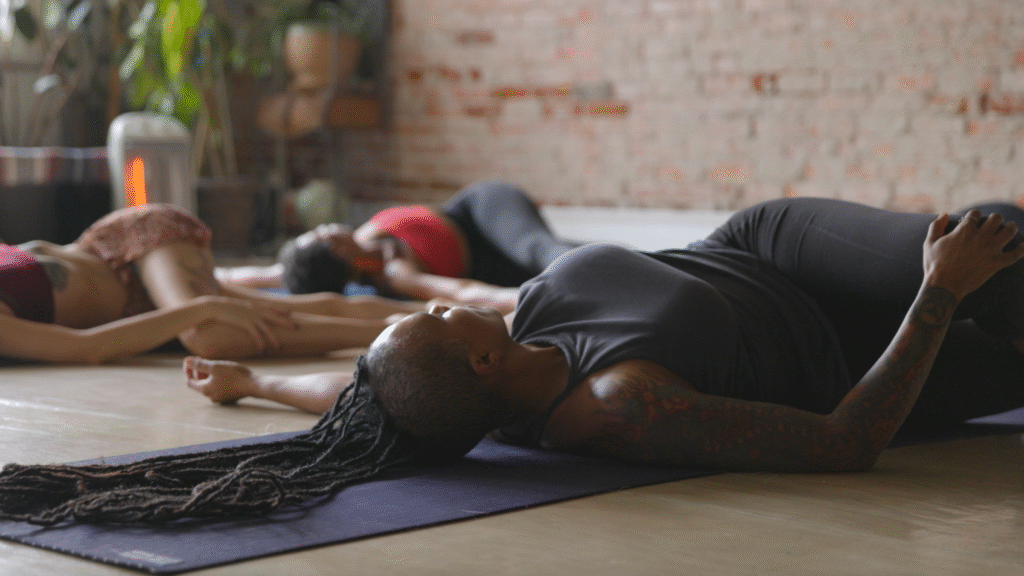Yin yoga is about stillness and allowing.
(Photo: Getty Images | Thomas Barwick)
Published October 9, 2025 05:00AM
If you’re in need of calming, slowing down, and simply being, this yin yoga for beginners practice provides refuge from the fast-paced world. It’s a more meditative practice in which you hold poses for at least a couple minutes to support profound physical and emotional release.
What Is Yin Yoga?
Yin yoga fosters stress relief and enhances flexibility and mobility, especially in the lower body, by targeting tension in the denser connective tissues. The practice supports stress relief and inner calm, helping you learn how to remain in stillness with slight discomfort, inviting you to bring a sense of balance and ease into the rest of your day.
Three principles, outlined by yoga teacher Sarah Powers, can help deepen your understanding of yin and your own practice. Powers distills yin to respecting your body’s limits (what she calls “playing your edges”), embracing stillness to quiet the mind, and holding for time to allow deep release. All three principles apply to each pose in your practice.
For example: a little discomfort is okay, but sharp pain is not. Stay where you feel a gentle challenge. Yin yoga is about accepting your body as it is, letting go of any urge to push or strain. It’s all about allowing.
15-Minute Yin Yoga for Beginners
This beginner-friendly yin yoga routine helps you release long-held tension. Practice the three principles described above in each pose.
Butterfly Pose
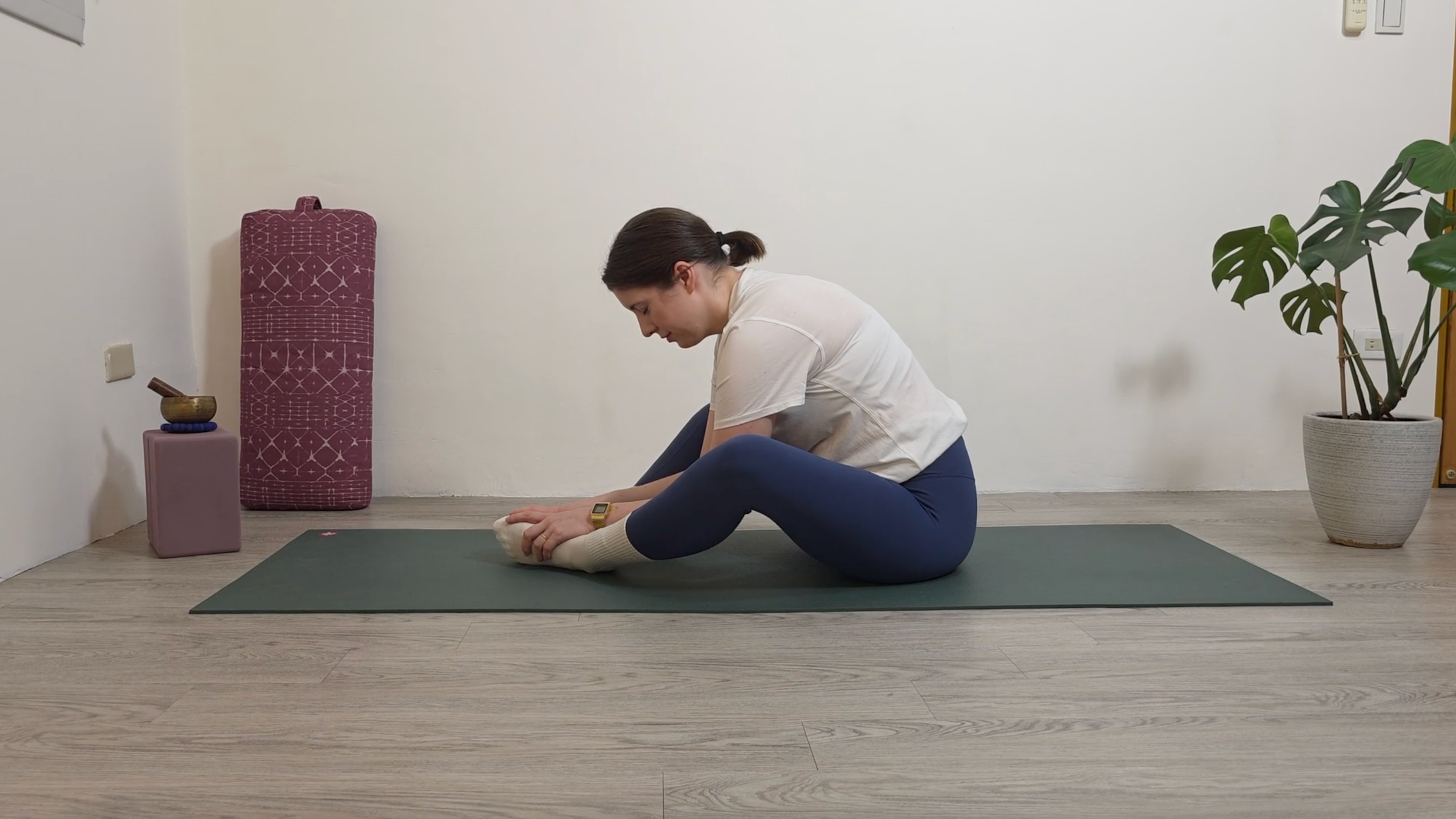
Butterfly Pose releases tension in the hips, inner thighs, and spine. Remember to practice playing your edge.
How to: Sit on your mat or on a firm cushion or yoga block for support. Bring the soles of your feet together, keeping them farther away from your body to decrease the intensity of the stretch. Don’t push your knees down—they’re fine where they are. Tilt your pelvis forward and fold forward over your legs until you feel the first point of resistance. This is your initial edge. Stay here, connect with your breath, and notice your body’s sensations.
Wait patiently as you practice the second principle of yin: stillness. Your body might soften, inviting you to fold slightly deeper, bringing your nose closer to your feet. This is your new edge. Stay here and see if another invitation to deepen arrives. If your body doesn’t open further, that’s perfectly fine.
Stay in Butterfly Pose for 2 minutes, playing your edges, focusing on your breath, and observing the sensations the pose brings.
Sphinx Pose
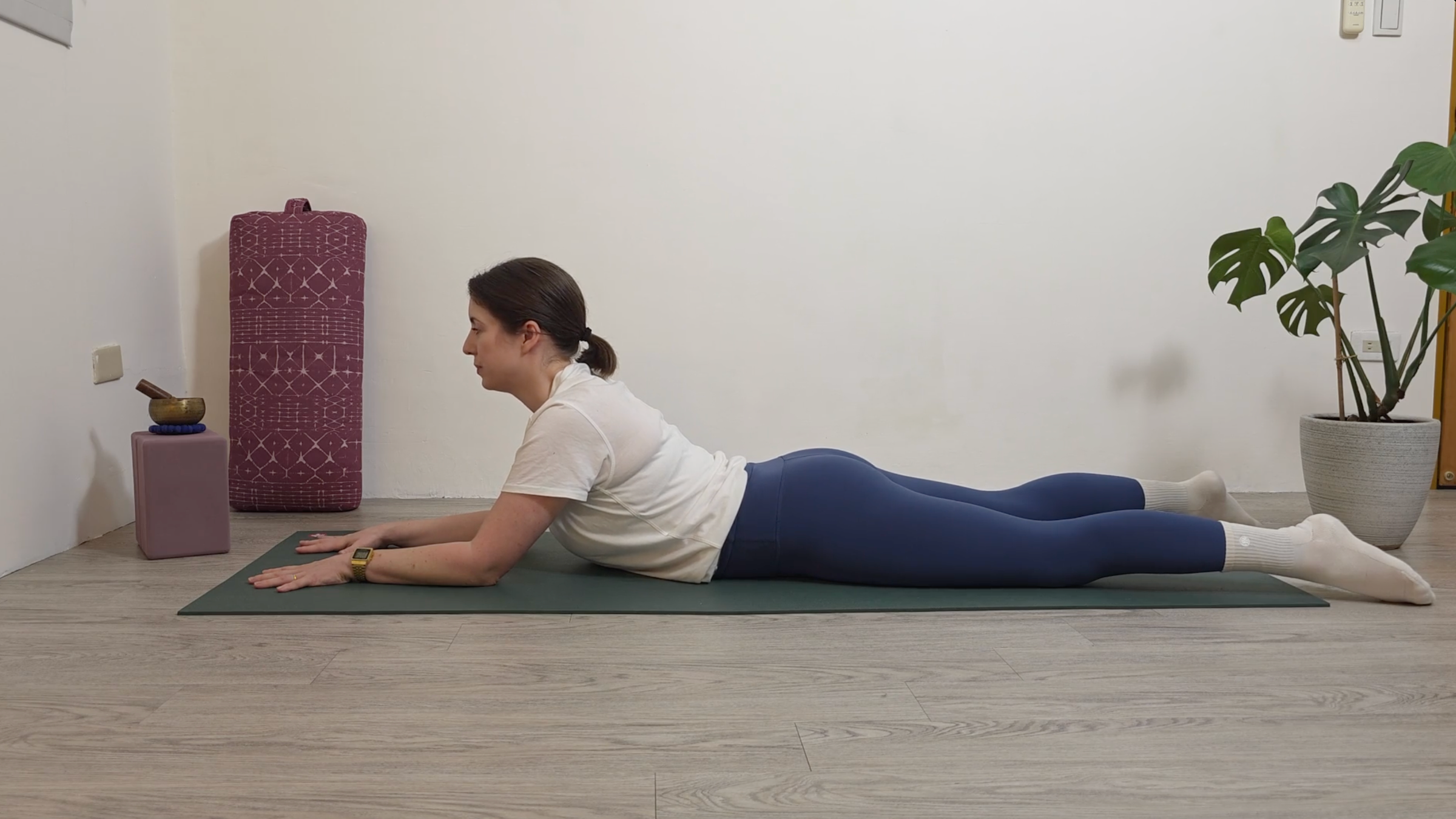
Sphinx Pose releases the lower back, stretches the spine, and opens the chest.
How to: Lie on your front with your forearms on the mat. For less intensity in the backbend, slide your elbows farther forward in front of your shoulders. Gaze diagonally down or straight ahead.
Once you find a comfortable version of the pose, commit to stillness. Avoid fidgeting or looking around. Quiet your mind by focusing on your breath and noticing the sensations the pose brings. There are two exceptions to stillness in which it’s okay to adjust: If you feel pain or extreme discomfort, or if your body invites you to move a little more deeply into the pose.
Then commit to staying here for 2 minutes.
Crocodile Pose
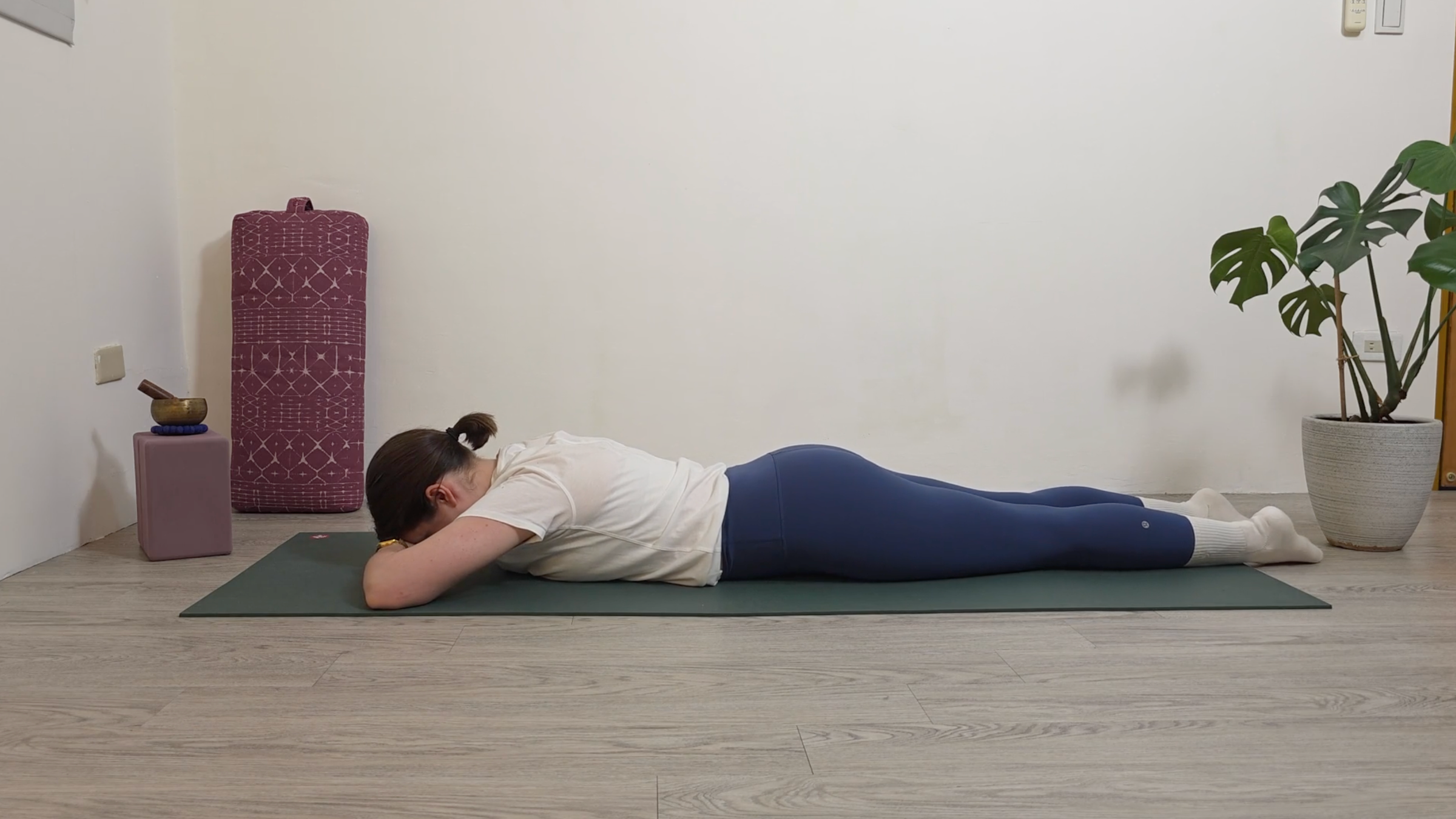
This much less intense backbend serves as a subtle counter pose to Sphinx Pose. Letting your heels fall away from one another can help release tension in the lower back.
How to: Rest in Crocodile Pose by bringing your big toes together and letting your heels fall outward the edges of your mat. Rest your forehead on your hands or the mat. Stay here for one minute.
Reclined Swan
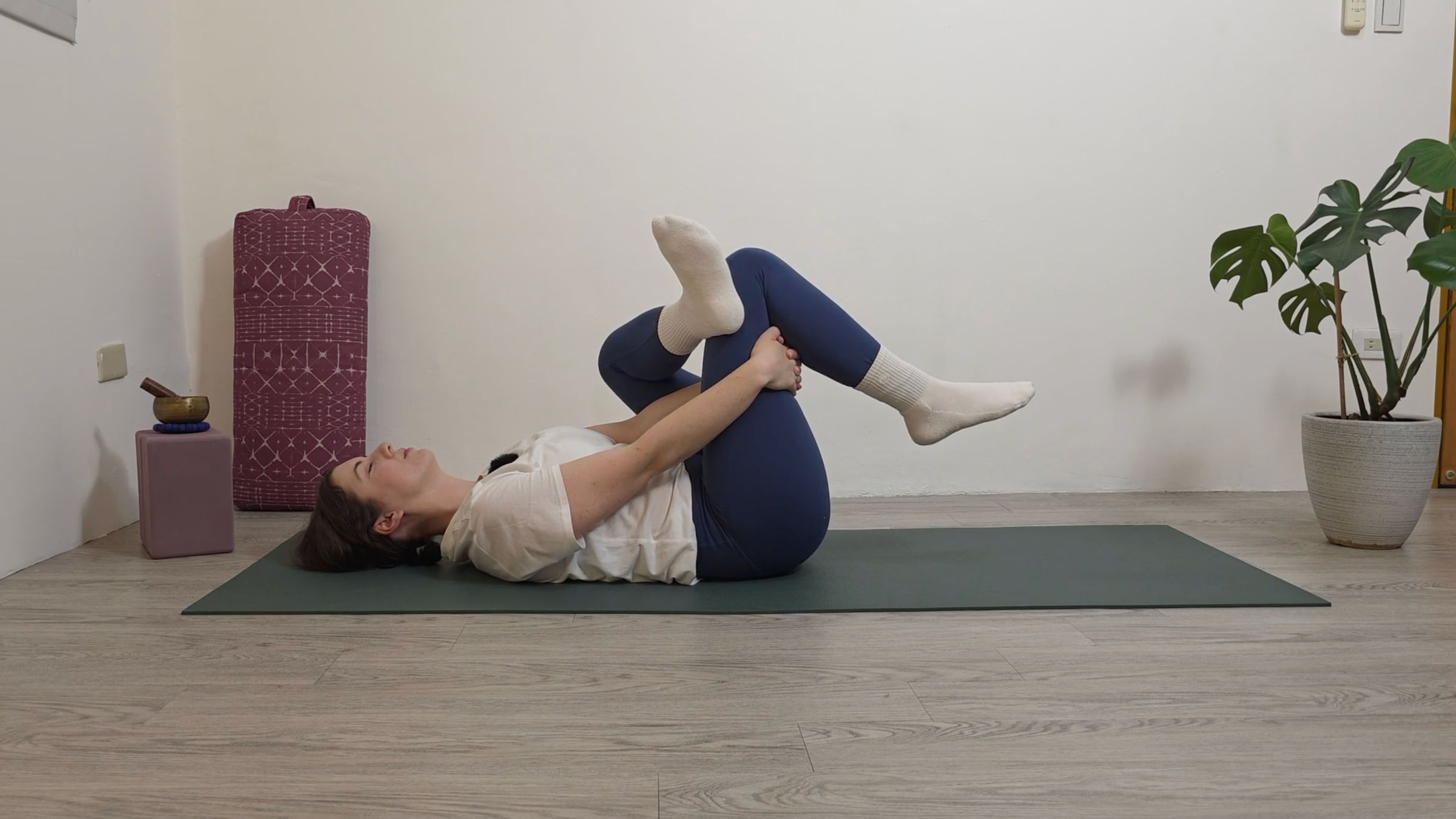
Reclined Swan releases the lower back and glutes.
How to: Lie on your back and bend your right knee, placing the sole of your foot on the mat. Rest your left ankle on your right thigh and gently push your left knee away from you to feel a stretch in your left glute—this is your first edge. If your body invites you to stretch more intensely, reach your arms alongside either side of your right leg and interlace your fingers behind your thigh, but don’t pull forcefully.
Stay here for 2 minutes.
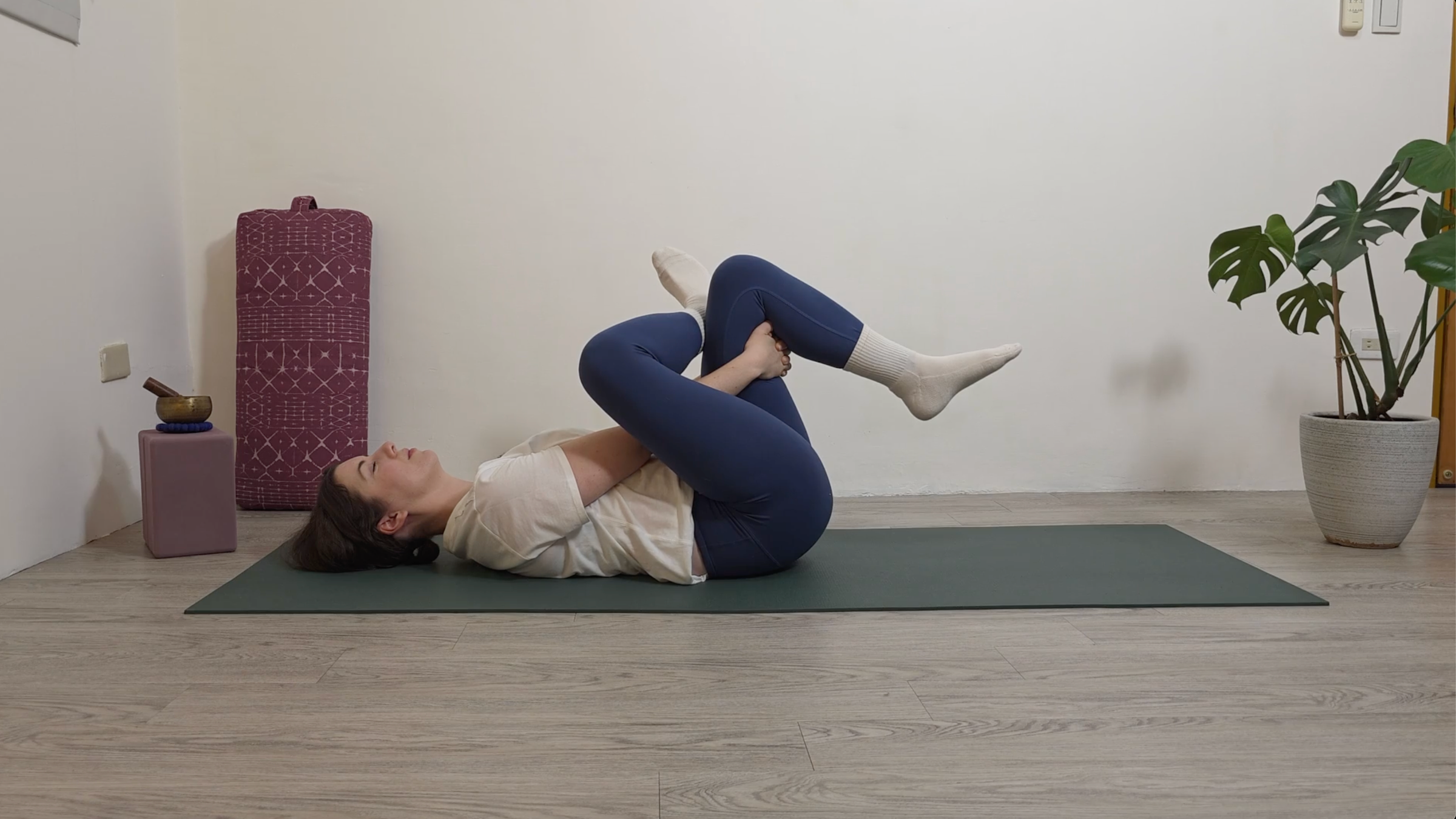
When you’re ready, repeat on the other side.
Reclined Twist
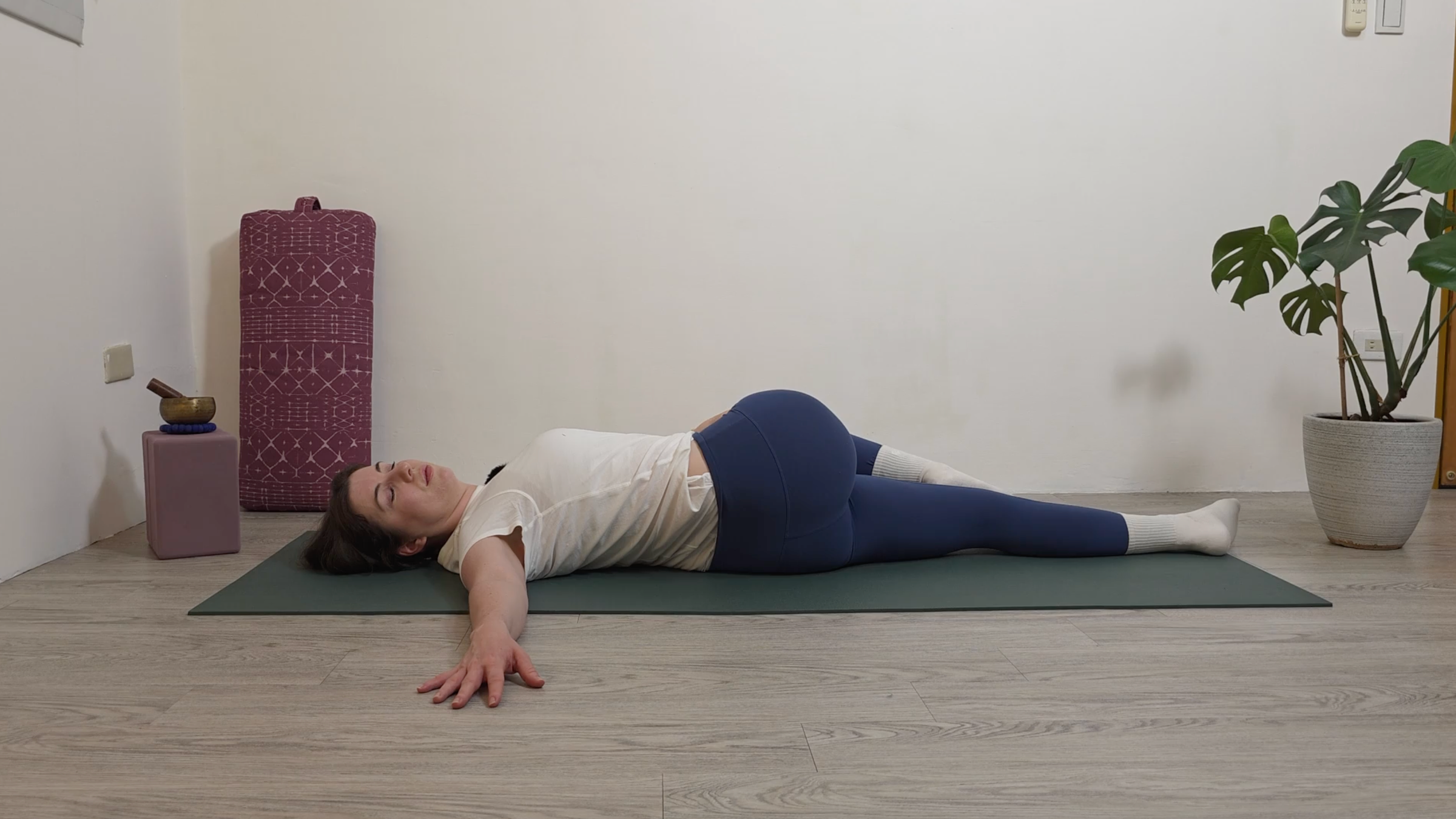
Reclined Twist creates a deep back stretch.
How to: Release your left foot to the mat and straighten it. Use your left hand to gently guide your right knee across your body to the left side of your mat. Stack your hips. Extend your right arm straight out from the shoulder if it feels okay. Try to keep both shoulders grounded and relaxed. For a deeper twist, gaze toward the right. Twist only as far as your body allows without strain or force.
Hold for 2 minutes.
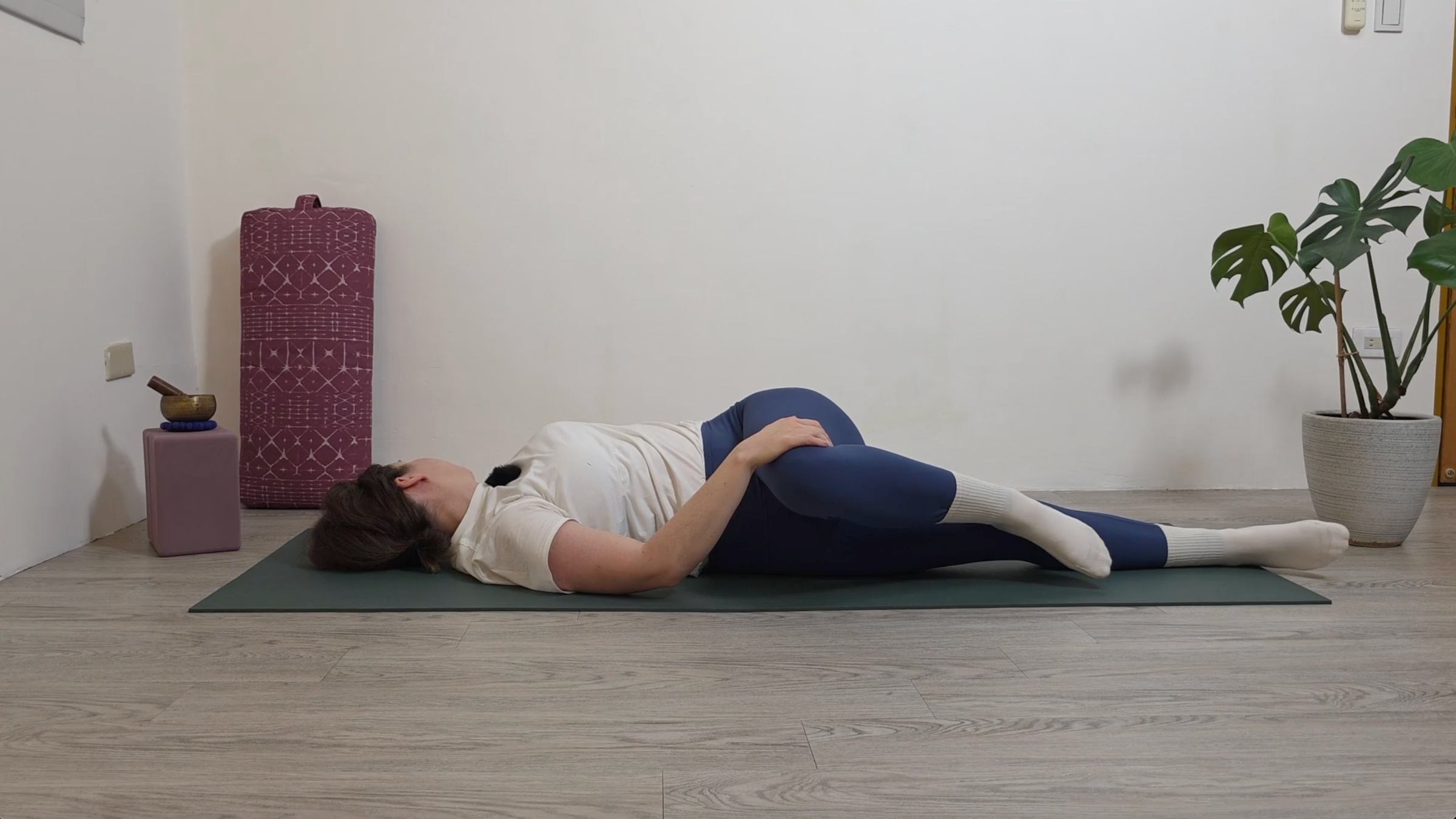
When you’re ready, repeat on the other side.
Savasana
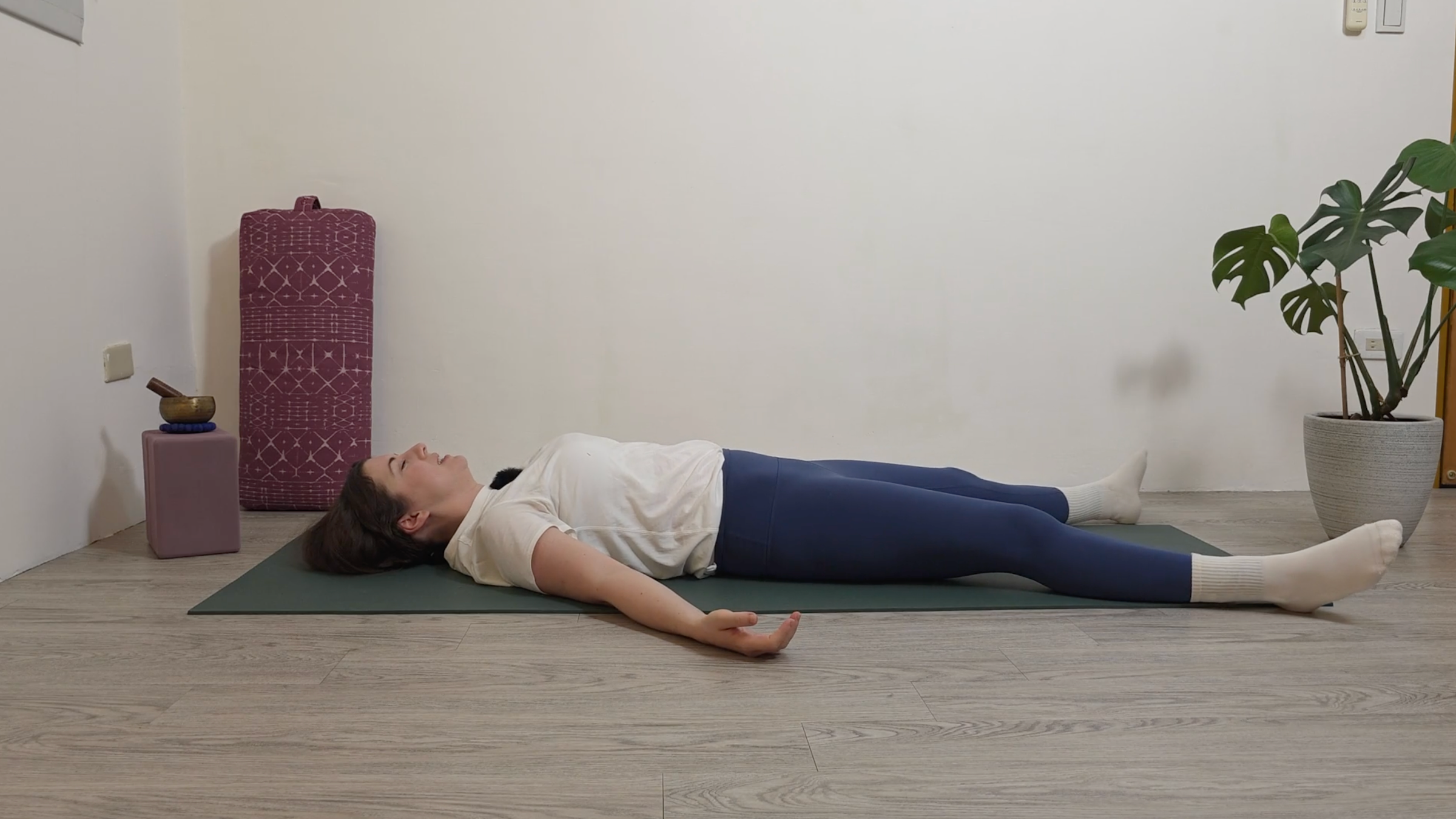
Rest in Corpse Pose for a few deep breaths, letting your arms and legs settle naturally, taking up space as your body needs. Sink into the earth, absorbing the full benefits of your yin yoga practice. Honor yourself for showing up this morning and embracing this gentle practice.


